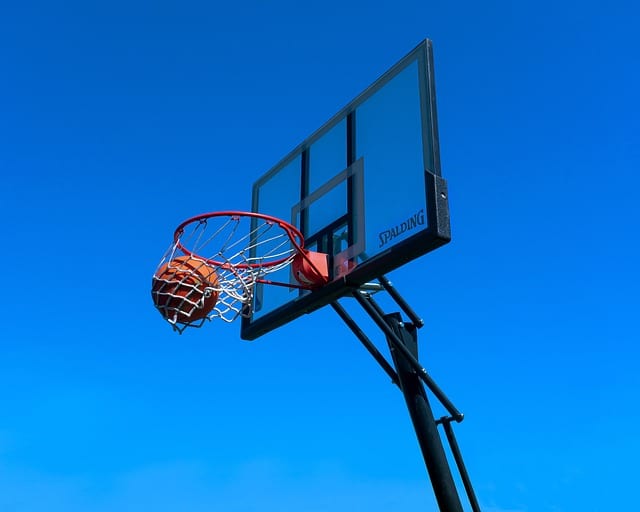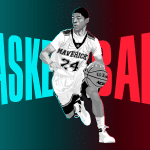When it comes to basketball, there’s more to the game than just skills like dribbling, shooting, or passing. To truly excel on the court, players need to be at the top of their physical game. Whether you’re playing at a professional level or just trying to step up your weekend pickup games, achieving peak basketball fitness is essential. Fitness in basketball isn’t just about looking good in the gym; it’s about improving endurance, agility, strength, speed, and flexibility to dominate every aspect of the game.
In this article, we’ll dive into the key components of basketball fitness and provide you with the best training tips to help you get in top shape. From endurance to agility to strength, these fitness drills and techniques will help elevate your game and prepare you to outlast, outpace, and outplay your opponents.

1. Basketball Endurance: Build Stamina for the Entire Game
One of the most important aspects of basketball fitness is having solid endurance. Basketball is a fast-paced sport, and whether you’re sprinting down the court for a fast break or fighting for position under the basket, you need to be able to sustain high levels of energy for the entire game. Good cardiovascular conditioning ensures you won’t gas out when the game gets intense.
Why Endurance Matters:
Basketball players are constantly on the move. The last thing you want is to slow down in the middle of a fast break or miss a critical defensive play because you’re too winded. By improving your endurance, you’ll be able to perform at a high level from the first buzzer to the last.
Training Tips for Endurance:
- Interval Running: Incorporate high-intensity interval training (HIIT) into your workouts. Try sprinting for 30 seconds, then walking for 30 seconds, and repeat for 15-20 minutes. This mimics the quick bursts of speed you’ll need in a game.
- Stair Sprints: Find a set of stairs and sprint up them for 10-15 seconds, then jog down for recovery. This exercise will help with both endurance and leg strength, as you’re constantly shifting between quick bursts and recovery.
- Long-Distance Running: While HIIT is great for game-like bursts, don’t forget about steady-state cardio. Running for 30-45 minutes at a moderate pace a couple of times a week can help improve your overall cardiovascular endurance.
2. Agility Training for Basketball: Move Like Lightning
Basketball is all about quick changes in direction—whether you’re shaking a defender with a spin move or recovering on defense, your agility can make or break your game. Agility training is designed to improve your ability to stop, start, and change direction on a dime.
Why Agility Matters:
Agility is crucial in basketball because it allows you to react to fast-moving situations. A quick first step on offense can leave defenders in the dust, while on defense, being able to quickly change direction helps you keep up with your man. Plus, agility training strengthens your overall coordination and balance.
Training Tips for Agility:
- Cone Drills: Set up cones in a zig-zag or diamond pattern and sprint through them as quickly as possible, focusing on sharp cuts and fast direction changes. This mimics the kind of movements you’ll be doing during a game.
- Ladder Drills: Use an agility ladder for footwork drills. Try different patterns, like high knees, lateral steps, or double steps. This helps with foot speed and control.
- Shuttle Runs: Set up two markers about 20-30 feet apart and sprint back and forth between them, touching the ground each time you reach a marker. This will improve your lateral quickness and conditioning.
3. Basketball Strength Training: Power Up Your Game
While agility and endurance are crucial, strength training is what allows you to battle in the paint, finish strong at the rim, and stay balanced when absorbing contact. Basketball strength training is not about getting huge—it’s about functional strength that improves your performance on the court.
Why Strength Matters:
Having a solid base of strength allows you to hold your ground when boxing out, take hits without losing your balance, and finish through contact at the rim. Strong legs will improve your jumping ability, while core and upper body strength will give you more control over the ball and better shooting power.
Training Tips for Strength:
- Leg Presses and Squats: Strong legs are essential for jumping and explosive movements. Include leg presses, squats, and lunges in your workouts to build leg power.
- Deadlifts and Power Cleans: These compound exercises work multiple muscle groups, improving your explosiveness and overall strength. They’ll help you get up for a rebound or defend more effectively.
- Core Workouts: Basketball requires a strong core for balance and stability. Incorporate planks, Russian twists, and hanging leg raises into your routine.
4. Speed Drills: Outrun Your Opponents
Speed is crucial in basketball—whether you’re sprinting down the court on a fast break or closing out on a shooter, the faster you are, the more effective you’ll be. Speed drills help improve your quickness and overall court coverage.
Why Speed Matters:
Speed is essential for both offense and defense. On offense, you want to get to your spot before the defense can react. On defense, you need to keep up with your opponent’s every move. The faster you can move, the more opportunities you’ll create for yourself and your team.
Training Tips for Speed:
- Sprints: Short-distance sprints (20-30 yards) are great for improving your burst speed. Try doing 10-15 sprints, with 30-second breaks in between.
- Resistance Sprints: Use a resistance band or a parachute to add resistance during sprints. This will help you build strength and speed.
- Treadmill Intervals: If you’re stuck indoors, treadmill intervals are a great option. Sprint at maximum speed for 20-30 seconds, then jog at a slower pace for 30-45 seconds, repeating for 10-15 minutes.
5. Cardiovascular Conditioning: Keep the Engine Running
If you want to last all four quarters, cardiovascular conditioning is your best friend. Building a strong cardiovascular base will improve your stamina and help you recover more quickly during timeouts or breaks.
Why Cardiovascular Conditioning Matters:
Without solid conditioning, you’ll tire out quickly, making you more vulnerable to mistakes. Your ability to recover quickly between plays is also critical. Good cardiovascular health allows you to push through fatigue and continue to perform at a high level.
Training Tips for Cardiovascular Conditioning:
- Jump Rope: This classic drill is great for improving your cardiovascular endurance. It works your legs, improves foot speed, and boosts your stamina.
- Swimming: Swimming is a low-impact, full-body workout that builds endurance while giving your joints a break from the stress of running or jumping.
- Cycling: Cycling is another great way to build cardiovascular fitness while working your lower body.
6. Flexibility for Basketball Players: Stay Loose and Injury-Free
Flexibility might not be the first thing that comes to mind when you think of basketball fitness, but it plays a critical role in your performance and injury prevention. Tight muscles are more prone to strain, which can sideline you for weeks.
Why Flexibility Matters:
In basketball, you’re constantly reaching, jumping, and twisting your body. If you’re not flexible, your range of motion is limited, and you’re more likely to get injured. Maintaining flexibility allows you to move more fluidly, improving your overall athleticism and keeping you on the court.
Training Tips for Flexibility:
- Dynamic Stretching: Before workouts or games, focus on dynamic stretching—leg swings, arm circles, lunges, and torso twists—to loosen up your muscles and improve mobility.
- Yoga or Pilates: These practices are excellent for improving flexibility, strength, and balance. They’ll help you lengthen your muscles and increase your range of motion.
- Post-Workout Stretching: After each workout, spend 10-15 minutes stretching your major muscle groups. Hold each stretch for 20-30 seconds to improve flexibility and help your muscles recover.
7. Plyometric Exercises: Jump Higher, Move Faster
Plyometric exercises are explosive, high-intensity movements that help develop power, speed, and agility. These exercises mimic the kind of movements you perform on the court—jumping, cutting, and sprinting.
Why Plyometrics Matter:
Plyometric exercises focus on explosive movements that generate power, which translates into quicker starts, higher jumps, and faster sprints on the court. If you want to increase your vertical leap or become a more explosive player, plyometric exercises are a must.
Training Tips for Plyometrics:
- Box Jumps: Jump onto a box or elevated platform to build explosive leg strength. Start with a lower height and gradually increase it as you improve.
- Lateral Jumps: Jump side-to-side over a cone or hurdle to improve lateral movement and quickness.
- Depth Jumps: Step off a box and immediately jump as high as possible upon landing. This trains your muscles to react quickly and explosively.
8. Fitness Drills for Basketball Players: A Holistic Approach
To be a top-level basketball player, you need to train your body holistically, combining endurance, agility, strength, speed, and flexibility into one balanced program.
Why Fitness Drills Matter:
Fitness drills are designed to simulate the movements you’ll perform on
the court. By combining several aspects of fitness into one drill, you can improve multiple areas at once—making your training more efficient.
Training Tips for Fitness Drills:
- Suicide Sprints: Sprint to a set of lines and back, gradually increasing the distance with each sprint. This is great for conditioning and mimics the constant running you’ll do during a game.
- Basketball-Specific Agility Drills: Combine dribbling with agility exercises to work on both your ball control and speed.
By incorporating these training tips into your routine, you’ll not only improve your overall basketball fitness, but you’ll also develop the tools to play at a higher level—no matter the competition. Whether it’s improving your endurance, agility, or strength, a balanced approach to training is the key to achieving peak performance on the court.
So get to work—your best game is just around the corner!



